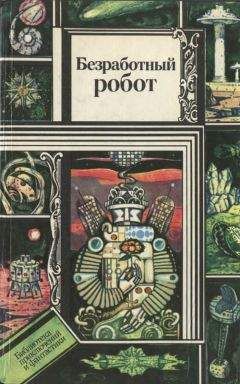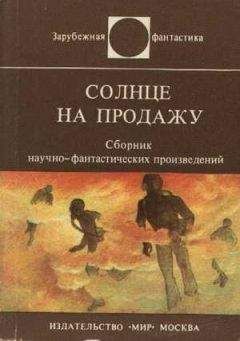Ася Казанцева - В интернете кто-то неправ! Научные исследования спорных вопросов

Помощь проекту
В интернете кто-то неправ! Научные исследования спорных вопросов читать книгу онлайн
4 Balter V. et al. Evidence for dietary change but not landscape use in South African early hominins // Nature, Sep. 2012, Vol. 489, 558–560.
5 Ingenbleek Y. and McCully K. Vegetarianism produces subclinical malnutrition, hyperhomocysteinemia and athero-genesis // Nutrition, Feb. 2012, Vol. 28, Issue 2, 148–153.
6 Список людей, пострадавших от фанатичного веганства (преимущественно не своего, а родительского): http:// whatstheharm.net/childvegetarianism.html
7 Krief S. et al. On the possible adaptive value of copropha-gy in free-ranging chimpanzees // Primates, Apr. 2004, Vol. 45, Issue 2, 141–145.
8 Harcourt A. and Stewart K. Coprophagy by wild mountain gorilla // African Journal of Ecology, Sep. 1978, Vol. 16, Issue 3, 223–225.
9 Herrmann W. and Geisel J. Vegetarian lifestyle and monitoring of vitamin B-12 status // Clinica Chimica Acta, 2002, Vol. 326, 47–59.
10 Louwman M. et al. Signs of impaired cognitive function in adolescents with marginal cobalamin status // American Journal of Clinical Nutrition, Sep. 2000, Vol. 72, No. 3, 762–769.
11 Black M. Effects of vitamin B12 and folate defciency on brain development in children // Food and Nutrition Bulletin, 2008 June, Vol. 29(2 Suppl), S126–131.
12 Amit M. Vegetarian diets in children and adolescents // Pa e – diatrics and Child Health, 2010 May-June, Vol. 15(5), 303–308.
13 Научно-популярная статья Коли Кукушкина про кофе (к сожалению, в интернет-версии – без его картинок, фанаты могут попробовать найти бумажный журнал или pdf-версию): http://zdr.ru/articles/pejte_kofe
14 Huang T. et al. Cardiovascular disease mortality and cancer incidence in vegetarians: a meta-analysis and systematic review // Annals of Nutrition and Metabolism, June 2012, Vol. 60, No. 4, 233–240.
15 Singh P. et al. Does low meat consumption increase life expectancy in humans? // American Journal of Clinical Nutrition, Sep. 2003, Vol. 78, No. 3, 526S–532S.
16 Craig W. Health effects of vegan diets // American Journal of Clinical Nutrition, May 2009, Vol. 89, No. 5, 1627S– 1633S.
17 Key T. et al. Mortality in vegetarians and nonvegetarians: detailed fndings from a collaborative analysis of 5 prospective studies // American Journal of Clinical Nutrition, Sep. 1999, Vol. 70, No. 3, 516s–524s.
18 Cade J. et al. The UK women’s cohort study: comparison of vegetarians, fsh-eaters and meat-eaters // Public Health Nutrition, Oct. 2004, Vol. 7(7), 871–878.
19 Kris-Etherton P. et al. AHA scientifc statement: fsh consumption, fsh oil, Omega-3 fatty acids, and cardiovascular disease // Circulation, 2002, Vol. 106, 2747–2757.
20 He K. et al. Fish consumption and risk of stroke in men // JAMA, 2002, Vol. 288(24), 3130–3136.
21 Tanskanen А. et al. Fish consumption and depressive symptoms in the general population in Finland // Psychiatric Services, Apr. 2001, Vol. 52(4), 529–531.
22 Morris M. et al. Consumption of fsh and n-3 fatty acids and risk of incident Alzheimer disease // Archives of Neurolo-g y, 2003, Vol. 60(7), 940–946.
23 Stafford R. et al. A multi-centre prospective case-control study of campylobacter infection in persons aged
5 years and older in Australia // Epidemiology and Infection, 2007 Aug., Vol. 135(6), 978–988.
24 Nachman K. et al. Roxarsone, inorganic Arsenic, and other Arsenic species in chicken: a U.S.-based market basket sample // Environmental Health Perspectives, 2013, Vol. 121(7), 818–824.
25 Pan A. et al. Red meat consumption and mortality. Results from 2 prospective cohort studies // Archives of Internal Medicine, 2012, Vol. 172(7), 555–563.
26 Micha R. et al. Red and processed meat consumption and risk of incident coronary heart disease, stroke, and diabetes: a systematic review and meta-analysis // Circulation, 2010, June 1, Vol. 121(21), 2271–2283.
27 Rohrmann S. et al. Meat consumption and mortality – results from the European prospective investigation into cancer and nutrition // BMC Medicine, 2013, Mar. 7, Vol. 11, 63.
28 Sinha R. and Rothman N. Role of well-done, grilled red meat, heterocyclic amines (HCAs) in the etiology of human cancer // Cancer Letters, Vol. 143(1999), 189–194.
29 Honikel K.-O. The use and control of nitrate and nitrite for the processing of meat products // Meat Science, 2008, Vol. 78, 68–76.
30 Pimentel D. and Pimentel M. Sustainability of meat-based and plant-based diets and the environment // American Journal of Clinical Nutrition, Sep. 2003, Vol. 78, No. 3, 660S–663S.
31 Bhat Z. et al. In vitro meat production: Challenges and benefts over conventional meat production // Journal of Inte-grative Agriculture, Feb. 2015, Vol. 14, Issue 2, 241–248.
32 Haddad E. and Tanzman J. What do vegetarians in the United States eat? // American Journal of Clinical Nutrition, Sep. 2003, Vol. 78, No. 3, 626S–632S.
33 Gale C. et al. IQ in childhood and vegetarianism in adulthood: 1970 British cohort study // BMJ, 2007, Vol. 334, 245–248.
Глава 9. “Надо есть натуральное”1 Watson C. et al. Unabated global mean sea-level rise over the satellite altimeter era // Nature Climate Change, 2015, Vol. 5, 565–568.
2 IPCC, 2013: Climate Change 2013: The Physical Science Basis. Contribution of Working Group I to the Fifth Assessment Report of the Intergovernmental Panel on Climate Change [T. F. Stock-er, D. Qin, G.-K. Plattner, M. Tignor, S. K. Allen, J. Boschung, A. Nauels, Y. Xia, V. Bex and P. M. Midgley (eds.)]. Cambridge University Press, Cambridge, United Kingdom and New York, N Y, USA, 1535 p.
3 Herrero M. et al. Livestock and greenhouse gas emissions: The importance of getting the numbers right // Animal Feed Science and Technology, 2011, Vol. 166–167, 779–782.
4 Thomassen M. et al. Life cycle assessment of conventional and organic milk production in the Netherlands // Agricultural Systems, 2008, Vol. 96, 95, 107.
5 Европейские правила выращивания органической продукции: Commission Regulation (EC) No. 889/2008 of 5 September 2008, http://eur-lex.europa.eu/LexUriServ/Lex-UriServ.do?uri=CONSLEG:2008R0889:20100701:EN: PDF
6 Tuomisto H. et al. Does organic farming reduce environmental impacts? A meta-analysis of European research // Jo u r – nal of Environmental Management, 2012, Vol. 112, 309–320.
7 Cannon J. et al. A highly reproducible rotenone model of Parkinson’s disease // Neurobiology of Disease, 2009, Vol. 34, 279–290.
8 Tanner C. et al. Rotenone, paraquat, and Parkinson’s disease // Environmental Health Perspectives, 2011 June, Vol. 119(6), 866–872.
9 IFOAM. Criticisms and Frequent Misconceptions about Organic Agriculture: The Counter-Arguments. 2008. http://infohub.ifoam.bio/sites/default/fles/page/fles/miscon-ceptions_compiled.pdf – Длинный список аргументов против органических продуктов – с возражениями от их производителей.
10 Simeone V. et al. Residues of rotenone, azadirachtin, py-rethrins and copper used to control Bactrocera oleae (Gmel.) in organic olives and oil // Food Additives and Contaminants, Apr. 2009, Vol. 26, No. 4, 475–481.
11 Mukherjee A. et al. Preharvest evaluation of coliforms, Escherichia coli, Salmonella, and Escherichia coli O157:H7 in organic and conventional produce grown by Minnesota farmers // Journal of Food Protection, 2004, Vol. 67, No. 5, 894–900.
12 Kouba M. Quality of organic animal products // Livestock Production Science, 2003, Vol. 80, 33–40.
13 Buchholz U. et al. German outbreak of Escherichia coli O104:H4 associated with sprouts // The New England Journal of Medicine, Nov. 2011, Vol. 365, No. 19, 1763–1770.
14 King L. et al. Outbreak of Shiga toxin-producing Esche-richia coli O104:H4 associated with organic fenugreek sprouts, France, June 2011 // Clinical Infectious Diseases, 2012, Vol. 54, Issue 11, 1588–1594.
15 Oliveira A. et al. The impact of organic farming on quality of tomatoes is associated to increased oxidative stress during fruit development // PLoS One, 2013, Vol. 8(2), e56354.
16 Dangour A. et al. Nutrition-related health effects of organic foods: a systematic review // The American Journal of Clinical Nutrition, July 2010, Vol. 92, No. 1, 203–210.
17 Smith-Spangler C. et al. Are organic foods safer or healthier than conventional alternatives? A systematic review // Annals of Internal Medicine, 2012, Vol. 157(5), 348–366.
18 Johansson E. et al. Contribution of organically grown crops to human health // International Journal of Environmental Research and Public Health, 2014 Apr., Vol. 11(4), 3870–3893.
19 Sörqvist P. et al. Who needs cream and sugar when there is eco-labeling? taste and willingness to pay for “eco-friendly” coffee // PLOS One, Dec. 2013, Vol. 8(12), e80719.
20 Отчет о кишечной инфекции, связанной с органическим шпинатом, на сайте CDC: http://www.cdc.gov/ecoli/2012/ O157H7-11-12/index.html?s_cid=.
21 Glaizal M et al. [Food poisonings related to organic buckwheat contaminated with Datura sp.: a poison control and toxicovigilance center activity] // La Presse Médi-cale, 2013 Oct., Vol. 42(10), 1412–1415 (текст статьи на французском, так что я поняла ее очень приблизительно, но франкоговорящие товарищи подтверждают, что да, было массовое отравление органической гречкой с примесью дурмана).
22 Murphy S. et al. Dietary supplement use within a multiethnic population as measured by a unique inventory method // Journal of the American Dietetic Association, July 2011, Vol. 111(7), 1065–1072.
23 Murphy S. et al. Multivitamin-multimineral supplements’ effect on total nutrient intake // American Journal of Clinical Nutrition, Jan. 2007, Vol. 85, No. 1, 280S–284S.
24 Carr C. et al. A randomized steady-state bioavailability study of synthetic versus natural (kiwifruit-derived) vitamin C // Nutrients, 2013, Vol. 5(9), 3684–3695.
25 McNulty H. and Pentieva K. Folate bioavailability // Proceedings of the Nutrition Society, 2004, Vol. 63, 529–536.
26 Burton G. et al. Human plasma and tIssue alpha-tocoph-erol concentrations in response to supplementation with deu-terated natural and synthetic vitamin E // American Journal of Clinical Nutrition, 1998 Apr., Vol. 67(4), 669–684.
27 Mursu J. et al. Dietary supplements and mortality in older women. The Iowa Women’s Health Study // Archives of Internal Medicine, 2011, 171(18),1625–1633.
28 Li K. et al. Vitamin/mineral supplementation and cancer, cardiovascular, and all-causemortality in a German prospective cohort (EPIC-Heidelberg) // European Journal of Nutrition, 2012 June, Vol. 51(4), 407–413.
29 Alexander D. et al. A systematic review of multivita-min-multimineral use and cardiovascular disease and cancer incidence and total mortality // Journal of the American College of Nutrition, 2013, Vol. 32(5), 339–354.
30 Watkins M. et al. Multivitamin use and mortality in a large prospective study //American Journal of Epidemiology, 2000, July 15, Vol. 152(2), 149–162.
31 Dong J.-Y. et al. Multivitamin use and risk of stroke mortality: the Japan collaborative cohort study // Stroke, 2015, Vol. 46, 1167–1172.
32 Qiao Y.-L. et al. Total and cancer mortality after supplementation with vitamins and minerals: follow-up of the Linx-ian General Population Nutrition Intervention Trial // Journal of the National Cancer Institute, 2009, Apr. 1, Vol. 101(7), 507–518.
33 Lippman S. et al. Effect of Selenium and vitamin E on risk of prostate cancer and other cancers. The Selenium and Vitamin E Cancer Prevention Trial (SELECT) // JAMA, 2009, 301(1), 39–51.
34 Omenn G. et al. Effects of a combination of beta-carotene and vitamin A on lung cancer and cardiovascular disease // New England Journal of Medicine, 1996, Vol. 334, 1150–1155.
35 Youngblood M. et al. 2012 update on global prevention of folic acid – preventable spina bifda and anencephaly // Birth Defects Research, Part A: Clinical and Molecular Teratology, 2013 Oct., Vol. 97(10), 658–663.
36 Imdad A. et al. Vitamin A supplementation for preventing morbidity and mortality inchildren from 6 months to 5 years of age // Cochrane Database of Systematic Reviews, 2010 Dec., Vol. 8(12), CD008524.
37 Combs G. The Vitamins. 4th edition. Elsevier, 2012.
38 Davis D. et al. Changes in USDA food composition data for 43 garden crops, 1950 to 1999 // Journal of the American College of Nutrition, 2004 Dec., Vol. 23(6), 669–682.
39 Fulgoni V. et al. Foods, fortifcants, and supplements: Where do Americans get their nutrients? // Journal of Nutrition, 2011 Oct., Vol. 141(10), 1847–1854.
Глава 10. “Мужчины умнее женщин!”1 Russell N. An Introduction to the Overton Window of Political Possibilities // Mackinac Center for Public Policy, 2006, https://www.mackinac.org/7504
2 Шпилькин С. Математика выборов – 2011 // Троицкий вариант, 2011, № 94, с. 2–4. http://trv-science. ru/2011/12/20/matematika-vyborov-2011/ Статистический анализ официальных данных о голосовании, отражающий “гребенку Чурова” и ряд других интересных эффектов.
3 Ruigrok A. et al. A meta-analysis of sex differences in human brain structure // Neuroscience & Biobehavioral Reviews, Feb. 2014, Vol. 39, 34–50.
4 Cairo O. External measures of cognition // Frontiers in Human Neuroscience, Oct. 2011, Vol. 5, 108.

























